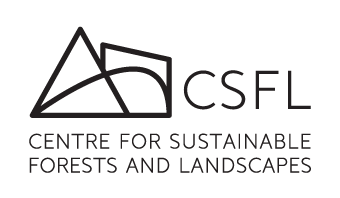
Image by John Fotheringham from Pixabay
In the march towards Scotland achieving its aims of Net Zero by 2045, the potential role that private finance can play in achieving this target, specifically through investment in natural capital, has come under increasing interest. Its need is often justified by a “funding gap”: the difference between the current public spending budgets, and the true costs of achieving the necessary land management priorities.
In 2020, as part of an EIT Climate KIC System Innovation Deep Demonstration (large-scale projects that design a portfolio of interventions – across education, technology, engagement, policy and other levels of change – to catalyse fast decarbonisation and create resilience 1.5C consistent systems), I worked with a group of Edinburgh University researchers and land-sector stakeholders to develop a systems understanding of the potential for private investment in natural capital; with an aim to create a detailed system map, charting the key forces enabling and inhibiting private investment in Scotland’s natural capital.
Whilst there were some positives, the findings from our map found some core themes inhibiting private investment. These can largely be categorised under three main themes:
- An uncertain role for private finance
- Inertia in the land sector
- Immature market mechanisms
(1) An uncertain role for private finance
Our research found the role private finance is to play in restoring the land in Scotland for a Net Zero world rich with biodiversity is unclear. Current investment is largely driven by corporate “Net Zero” targets but investment in carbon, and wider natural capital, is ultimately voluntary. There is a mismatch between what private investments want and what can be delivered by current natural capital initiatives.
Private investment in natural capital can be split into three categories with distinct characteristics:
- Offsetting
- Insetting and supply chain risk reduction, and
- Green finance
Organisations investing in offsetting look to compensate emissions or natural capital loss by funding additional activities, such as tree planting. Whilst this does not offer a direct return for the company, it may confer numerous business advantages. However, with no legal requirement for companies to reduce their emissions, investment is limited. Current and future UK statutory measures, such as emissions trading schemes, currently exclude the land sector from their scope, and do not permit offsets.
Companies can also invest in natural capital to achieve emission reductions within their own land-based supply chain (insetting). This process is dependent on companies taking responsibility for their Scope 3 emissions (those relating their total supply chain). Additionally, these companies can also invest in natural capital to improve supply chain resilience and reduce risks. Such approaches are currently rare: the companies face difficulties with the mismatch between short-term investment horizons and decision making and the long time-frame which is required for nature-base solutions to become effective. Moreover, the timescale where risks may materialise is also extended. These difficulties are exacerbated by poor understanding of risks. Whilst some measures can be taken to effectively mitigate risks at the organisation level, more powerful measures require coordinated landscape-scale action. There are some recent initiatives that have arisen to help achieve this; one, Landscape Enterprise Networks, matches aggregated demand with aggregated supply of ecosystem services within a region.
Green finance may be willing to accept lower than the market rate returns, however, such returns are difficult to clearly identify. They require a revenue-generating activity such as a tourism business or loss-avoidance outcome such as improved water or air quality which often fall under the sphere of public goods: those where consumption of the good doesn’t reduce the amount available for others, and where it is not possible to provide the good without it being possible for others to enjoy. Although increased funding for natural capital may be both possible and desirable, there are legitimate concerns about the further privatisation of public goods.
(2) Inertia in the land sector
Fundamental to increasing private finance investment in natural capital is having fundable projects. The limited profitability of land sector businesses means that landowners often have limited resources, both time and money, to invest in undertaking land use change. Additionally, this financial fragility means few land sector businesses can absorb losses leading to low risk tolerance. Low profitability and high risk mean that land-sector businesses do not meet traditional private finance requirements. In addition, a limited number of new entrants leads to a concentration of land ownership and cultural land management, which adds to the resistance to rapid change.
To help create momentum in the land sector, a clear indication of direction and detailed plans for Net Zero and biodiversity gain from government is required to give landowners, companies, and investors confidence to act now.
(3) Immature market mechanisms
As the markets for carbon and other ecosystem services are relatively new, they lack some of the components required to ensure engagement by landowners (sellers) and investors (buyers). As the market develops, these mechanisms will mature, and capacity and knowledge will also increase; ongoing support will be crucial to ensure this happens. Although technology can support development of market mechanisms and help reduce transaction costs, it will not be able to completely circumvent inherent problems of trading in natural capital. These includes the nature of public goods, difficulties with quantifying complex ecosystems, and issues of permeance and additionality if being sold as an offset.
System Map
Our system map delves into the three themes in more detail, exploring how they connect in causal loops and how these loops interact with one another. It aims to answer the question ‘Why is the system the way it is?’ or in this instance “Why has the uptake of private finance for natural capital investment been limited in Scotland?”. The map is not meant to be a complete catalogue of everything that influences the system. Instead, it aims to display the most important areas of focus that are key to answering this question, and therefore where we might best act to move the system towards one we want.
Hester Robertson was the project manager of Landscapes as Carbon Sinks
and is the founder of Cloud Forest
(Image by John Fotheringham from Pixabay)




Leave a Reply